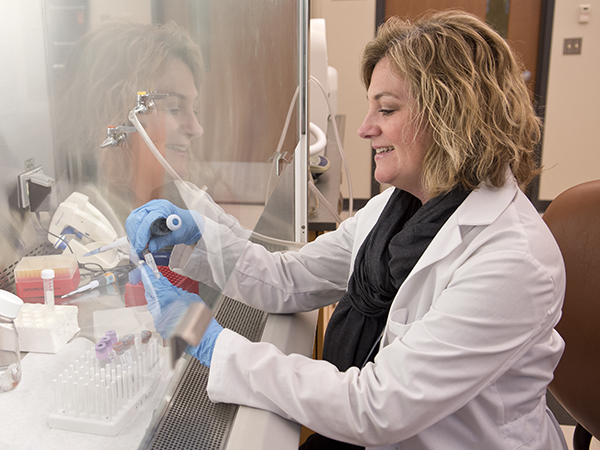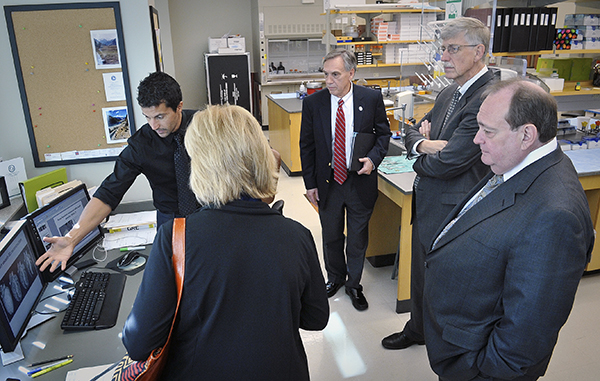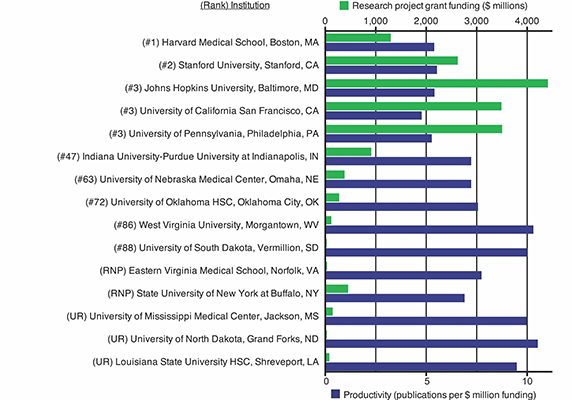UMMC makes the most of research money

Published in News Stories on January 05, 2017
The University of Mississippi Medical Center outpaces institutions such as Harvard Medical School and Johns Hopkins University in relative research productivity.
UMMC scientists publish 10 peer-reviewed publications for every $1 million they receive from the National Institutes of Health. Meanwhile, the top five U.S. medical schools for research, based on the 2016 rankings from U.S. News and World Report, average only five or six.
In light of this knowledge, Dr. Wayne Wahls, at the University of Arkansas for Medical Sciences, has a proposition for government funding agencies.

Wahls (Courtesy: UAMS)
“Send my tax dollars to Mississippi,” wrote Wahls, a professor of biochemistry and molecular biology. He published the essay in the October 2016 issue of ASBMB Today, the magazine of the American Society of Biochemistry and Molecular Biology.
Using information from the NIH databases RePORTER and PubMed, Wahls has been examining disparities in biomedical research funding across investigators, institutions and states.
“I began to wonder why some of my colleagues at smaller universities have more difficulty receiving funding than those at some of the more prestigious universities,” he said.
In searching for the answer, Wahls discovered something else.
“Taxpayers net more scientific publications by funding investigators at the University of Mississippi Medical Center (and other low-ranked institutions) than by giving the funds to prestigious and top-ranked institutions,” he wrote.

Professor of physiology and biophysics Dr. Alejandro Chade, back left, describes his research to professor and chair of physiology Dr. John Hall, center, and NIH director Dr. Francis Collins, back right, during Collins’ 2012 visit to UMMC.
One of Wahls' students sent the essay to Dr. Richard Summers, associate vice chancellor for research. Knowing UMMC's history, Summers wasn't surprised by the finding.
“We've always functioned lean,” he said. “We have a history of make-do, can-do strategies and being able to more with less.”
Decreased appropriations to most NIH divisions during the recent recession may have hampered research at universities with historically strong funding, Summers said. Not so at UMMC.

Summers
“We are still able to move forward,” Summers said.
And while UMMC has a strong legacy, Summers said, it needs NIH support to progress into the 21st century.
“Research funding is important as we move forward,” Summers said. “Research techniques are becoming more complicated and expensive. At UMMC, we have been able to accomplish a lot with a little, but it will become harder to do that with time.”
Wahls says institutions such as UMMC might face implicit bias from funding committees. Universities with strong international reputations garner more attention and more research dollars. The disparity also extends to the state level. Mississippi received $7.28 per person in NIH project funding from 2004 to 2013, ranked 46th in the United States. Top-ranked Massachusetts brought in $283.
“If people know that these smaller institutions produce twice as much research, we could begin to address the imbalance in funding and get scientists to talk about these disparities,” Wahls said.

While UMMC, third from bottom, receives much less NIH funding than top-ranked medical schools, it produces nearly twice as many publications.
UMMC received $59.6 million for research from all sources in fiscal year 2016. In addition, NIH-sponsored projects announced later in 2016 will help drive the enterprise in coming years. In August, the Mississippi Center for Clinical and Translational Research started with a record $19.9 million award. In September, UMMC became a site for the Environmental Influences on Child Health Outcomes study. The Atherosclerosis Risk in Communities Study site was renewed in November, extending the project into its third decade.
UMMC's investment in advanced data analytics and clinical research infrastructure, in the form of a new Translational Research Center and an inpatient clinical trials unit, correlate well with growing NIH interest in translational and clinical studies.
“The work we've done over the last couple of years, capitalizing on support we've received from the state and federal governments for research facilities and expanding on our relationship with the Mayo Clinic, have positioned us for success in the future,” Summers said.


